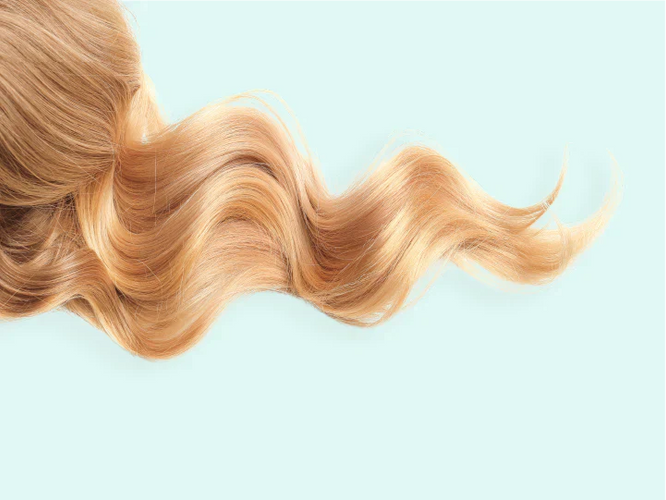Hair follicles are small structures deep in the skin from which each hair grows. They run from the upper layer of the skin (the epidermis) into the deeper layer (the dermis), and sometimes even into the fatty tissue underneath. Every hair follicle follows a fixed cycle of growth, transition and rest. This means a follicle can stop producing a hair for a while and start again later. In this blog, you will learn how hair follicles are built, how many you have and what happens when they become less active.
Hair follicles: the foundation of your hair growth
Hair follicles start developing before you are born. Around week 22 of pregnancy, a foetus has about five million follicles. Around one million of these are located in the head and neck area. On the scalp, there are usually between 80,000 and 150,000 follicles, depending on hair colour and your genetic background.
After birth, no new hair follicles are formed. The number stays the same, but the density seems to decrease as your head grows. Hair follicles can also become less active for a period of time, for example due to stress, illness, hormones, nutrient deficiencies, chemotherapy or hereditary hair loss. When this happens, the follicle may produce thinner hairs, shorter hairs, or sometimes no hair at all.
How many hair follicles do you have?
Not everyone has the same number of hair follicles. The number of hairs also varies by hair colour:
|
Hair color |
Number of hairs |
|
Blonde |
140.000 - 150.000 |
|
Brown |
100.000 - 110.000 |
|
Black |
100.000 - 110.000 |
|
Red |
80.000 - 90.000 |
The number of hairs you have depends mainly on the thickness of the hair. Blonde hair is usually thinner and takes up less space on the scalp. This allows more hairs to grow per square centimetre. Red hair is often the thickest, which means fewer hairs can grow at the same time. Brown and black hair fall somewhere in between.
The number of hairs on your head is not only different from person to person, but also has a purpose. Hair helps protect the skin from sunlight and dirt. It also plays a role in temperature control. Because humans have a relatively low hair density, sweat can evaporate more easily, helping the body to cool down.
The structure of your hair
Hair is made up of two main parts:
- The hair follicle: the part under the skin where the hair is formed.
- The hair shaft: the visible part above the skin.
Both parts have their own structure and function.

Image 1: Structure of the hair
Inside the follicle (the hair root)
The hair follicle is a small tunnel in the skin where the hair grows. On the scalp, each follicle usually produces one hair, although several follicles can form a “follicular unit” together.
At the bottom of the follicle is the hair matrix. This is where new cells are made, which allows the hair to grow longer. The matrix sits around the dermal papilla, a small area with blood vessels that supply oxygen and nutrients.
Each hair follicle also contains:
- A sebaceous gland: this produces sebum, which keeps the hair and skin soft.
-
The arrector pili muscle: a tiny muscle that tightens when you feel cold or emotional. This is what causes goosebumps.
Structures inside the follicle
- Hair bulb: the lowest part of the hair, attached to the papilla.
- Dermal papilla: provides the hair with nutrients and oxygen.
- Arrector pili muscle: causes goosebumps.
-
Sebaceous glands: produce sebum, which protects the hair from drying out.
The hair shaft (the visible part of your hair)
The hair shaft is mainly made of keratin, the same protein that your nails are made of. The shaft has three layers:
- Cuticle: the outer protective layer made of tiny overlapping scales.
- Cortex: the middle layer with keratin fibres and pigment. This layer gives the hair its colour, strength and elasticity.
- Medulla: the core of the hair. It is mainly found in thick or coarse hair.

Image 2: layers of the hair shaft
Can hair follicles open and close?
Hair follicles do not work like pores that open and close. The opening of the follicle is a fixed channel through which the hair grows.
However, hair follicles can become blocked or irritated. This can happen due to:
- too much keratin
- excess sebum
- friction or pressure
- inflammation
An inflamed hair follicle (folliculitis) looks like small red bumps or pimples around the hair. In our separate blog about folliculitis, we explain how this inflammation develops, how to recognise it and which options can help calm the scalp.
Can hair follicles grow back?
A hair follicle does not grow back once it has completely disappeared, such as in forms of scarring hair loss. In those cases, the follicle is replaced by scar tissue and can no longer produce a new hair.
In most situations, however, the hair follicle is still present but temporarily less active. This can happen due to:
- stress
- illness
- hormonal changes
- nutrient deficiencies
- after pregnancy
- early-stage hereditary hair loss
When the hair follicle is still intact, it can produce a healthy hair again once the growth cycle recovers.
The three phases of the hair growth cycle
Neofollics follows the classic model of three phases:
- Anagen phase (growth phase): the hair grows actively.
- Catagen phase (transition phase): the hair stops growing.
- Telogen phase (rest and shedding phase): the hair loosens and falls out.
Would you like to understand exactly how these phases work? Then read our blog about the hair growth cycle for a clear explanation.
How can you support weakened hair follicles?
In many forms of non-scarring hair loss, the hair follicles are still present but do not work as well as they should. You can support the condition of your hair and scalp by:
- Finding the cause of your hair loss: stress, hormones or nutrition can all play a role.
- Using gentle care: choose mild products that do not irritate the scalp.
- Using targeted hair growth care: Neofollics uses ingredients such as biotin, zinc, saw palmetto and plant extracts, based on scientific research. You can read more on our ingredients page.
- Being patient: hair grows slowly. Improvements usually take several months.
If you experience sudden hair loss, pain or bald patches, it is best to speak to a doctor.
FAQ
Can hair fall out with the hair follicle?
No. If you see a hair with a white bulb at the end, this is not the hair follicle. It is made of keratin and sebum and is part of the natural shedding phase. The hair follicle always remains in the skin.
Can you pull out a hair follicle?
No. A follicle is anchored deep in the skin and cannot be pulled out. When you pluck a hair, you only remove the hair and the soft tissue around it. The follicle stays in place.
What does the white bulb at the end of a hair mean?
This is not a hair follicle, but a mix of keratin and sebum. It is part of the telogen (rest) phase and is completely normal.
Can you restore dead hair follicles?
In non-scarring hair loss, hair follicles are usually not “dead” but less active. With the right routine and care, they can produce healthier-looking hair again. In cases of scarring, recovery is unfortunately not possible.
Conclusion
Hair follicles are the foundation of your hair growth and go through a fixed cycle of growth, transition and rest throughout your life. How active a follicle is depends on factors such as genetics, hormones, health and the condition of your scalp. Some follicles become less active for a period of time due to stress, illness or hormonal changes. With hereditary hair loss, they may slowly produce smaller hairs. Only when scar tissue forms can a hair follicle disappear permanently.
Although hair follicles cannot form again once they are gone, you can support them with gentle hair and scalp care, and with products that help improve the condition of the scalp.
Bronnen
Fitzpatrick, T. B., Johnson, R. A., & Wolff, K. (2019). Fitzpatrick’s Dermatology in General Medicine. McGraw-Hill.
DermNet New Zealand. (z.d.). Hair and scalp conditions. DermNet NZ.
National Institutes of Health. (z.d.). PubMed database of scientific studies on hair follicles and hair growth. NIH.
This information does not replace professional medical advice. If in doubt, always consult a doctor or specialist.













